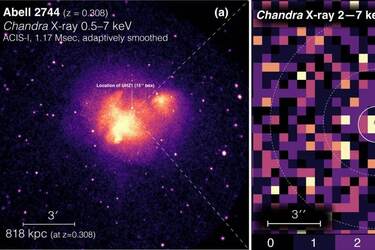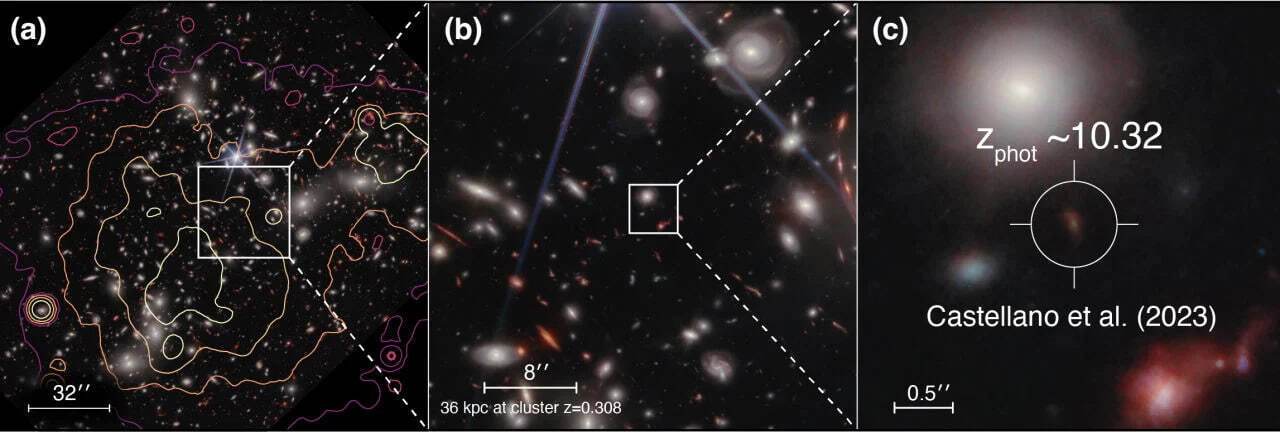Astronomers found a black hole from the early Universe with a mass of 40 million Suns

Astronomers have discovered a supermassive black hole in a quasar that existed just 459 million years after the Big Bang, thanks to observations by the James Webb and Chandra space telescopes. Scientists have estimated the mass of this black hole at about 40 million solar masses. According to a study published on arXiv, the supermassive black hole could have been formed as a result of a direct collapse of gas clouds in the galaxy.
Read also: Four astronauts will go to the ISS to grow stem cells in space for the first time
Quasars are active galactic nuclei in which supermassive black holes actively absorb matter, leading to powerful radiation and the release of gas and dust at high speeds. Researchers are studying distant quasars that existed in the early Universe, just 500-700 million years after the Big Bang, to uncover possible mechanisms of supermassive black hole formation.
Observations by the Chandra and James Webb telescopes revealed the X-ray radiation of a quasar located in the UHZ1 galaxy. The analysis of this radiation confirmed the presence of a supermassive black hole with a mass of about 40 million Suns. This is much larger than usually expected, as the mass of supermassive black holes usually does not exceed 0.1% of the mass of their parent galaxies.

According to observations, supermassive black holes are formed from smaller embryos that result from the collapse of the first massive stars. However, the case of UHZ1 may be exceptional, since with a mass of 40 million Suns, the black hole was probably formed as a result of a direct collapse of gas in the galaxy.
This scenario allows it to immediately have a significant mass, which simplifies further mass accumulation. The researchers believe that the black hole in UHZ1 could grow to its current mass within just 300 million years.
As a reminder, scientists have answered which asteroids could destroy the Earth and when it could happen.
If you want to get the latest news about the war and events in Ukraine, subscribe to our Telegram channel!
